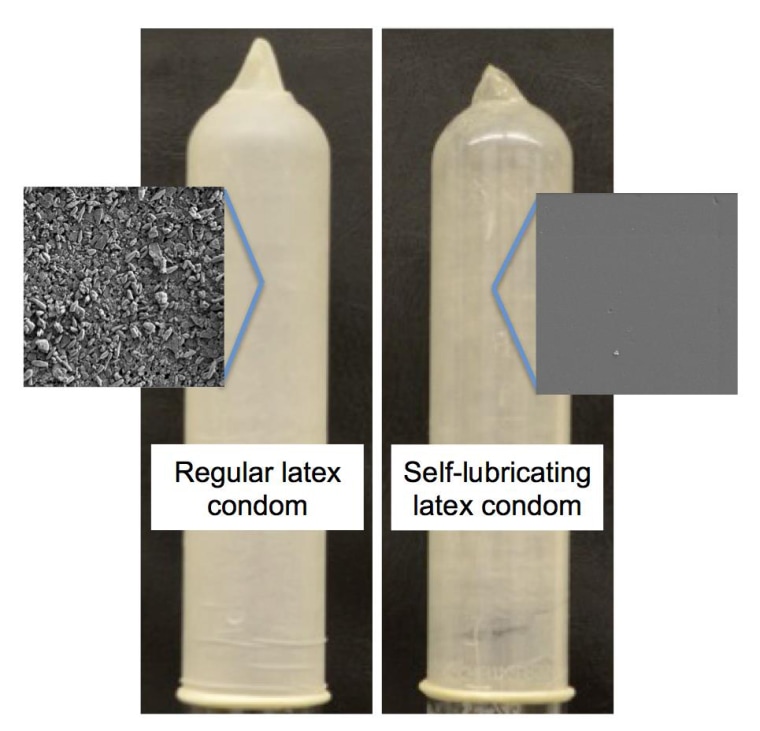Condoms are a great way to prevent sexually transmitted diseases including syphilis and the HIV virus that causes AIDS. They also prevent pregnancy. Plus they are cheap.
The trouble is, people often don’t like to use them. One major complaint is that they feel dry and uncomfortable.
A team at Boston University has come up with a possible solution: a self-lubricating condom.
They developed a compound that sticks to the latex of a condom, and that also holds a thin layer of water. The result is a condom that stays dry until it is touched with a few drops of fluid – either water or bodily fluids. Then it becomes slippery, and holds that slippery texture for a long time.
“Maybe this can have a chance to increase condom use and prevent the spread of HIV and other diseases,” Mark Grinstaff, a bioengineering professor at Boston University who led the study team, told NBC News.
The team had 33 people feel the condom, although they couldn’t test it in real-life action without permission from the Food and Drug Administration. Almost all of them agreed it was better than a normal, non-lubricated condom and many of those who said they never used condoms agreed they would at least try it out.
“Those individuals who don’t regularly use a condom because it is uncomfortable or because they don’t like it say they would be likely to use a product like this,” Grinstaff said.
Grinstaff’s lab specializes in making interesting material coatings and they started work on the condom idea when the Bill & Melinda Gates Foundation put out a call for ideas to encourage condom use.
“We had this idea that if one could take a latex condom put a coating on it and in the presence of water that condom would become slippery, maybe we would have a self-lubricating condom,” Grinstaff said.
The Boston team got funding from the Gates Foundation to start the project.
They came up with a compound that both adhered to latex, and held a thin layer of water. Regular lubricants wear off fairly quickly, leaving the condom dry and even sticky, but this compound kept the condom slippery for 1,000 back-and-forth cycles, the team reported in the journal Royal Society Open Science.
"The strategy renders fluid lubricants unnecessary for delivering a feeling of lubrication, as the latex surface itself is rendered slippery by the surface treatment," the team wrote.
It should work in real-life use, Grinstaff said.

“During sex there is bodily fluid that gets generated. That is sufficient to wet the surface of the condom. It takes very, very little water.”
The condom also held up with the new compound on its surface. Tests showed that latex condoms stayed just as strong and supple and non-coated condoms, the team reported.
This won’t work for polyurethane condoms, Grinstaff said. “That will take new chemistry to figure out,” he said.
One of the graduate students working in Grinstaff’s lab, Stacy Chin, has helped found a company to commercialize the product. The company, called Hydroglyde Coatings, plans to start human testing of the new condoms late this year or early next year, Grinstaff said.
They hope their product is a little less messy and simpler to use than standard condoms with a lubricant.
"Condom-associated discomfort is a common ‘turn-off’ and a highly cited reason for persuading one’s partner to forgo using condoms, so many individuals choose to use lubricants to decrease this discomfort," the team wrote.

